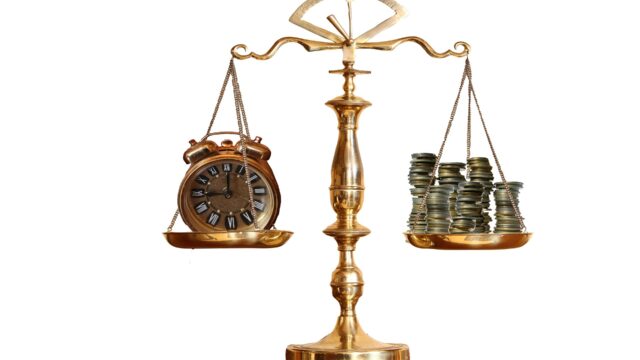Hello, I’m Mina, a stock investor and real estate agent in Japan.
Dividends are fantastic. When you don’t have much capital, they may not amount to much, but as your funds grow, they can become quite substantial. Some people even live off of them.
In this article, I will discuss smart ways to find and buy high-dividend stocks in Japan. Please stay tuned until the end.
Conclusion
The method is to “verify and purchase stocks recommended by someone else.”
I will explain how to identify good high-dividend stocks later, but even if you use that method, it can be difficult to go through countless stocks one by one. Therefore, select the stocks that shine from among the candidates selected by others.
Table of Contents
This article was written by:
- Someone with 5 years of experience in short-term investments and 5 years in long-term investments
- Who manages high-dividend Japanese stocks and US ETFs
- A certified first-class financial planner (CFP)
- A licensed real estate agent
Why Are High-Dividend Stocks Good?
Index fund investing for long-term assets has become popular in recent years. I agree with this opinion as it is probably the best solution for maximizing assets in the future.
On the other hand, high dividend stocks can be considered an investment to make the present shine rather than the future. You can feel the cycle of money generating money and benefit from “passive income”. This benefit leads to motivation for continued investment.
Moreover, high dividend stocks demonstrate their strength even in a downturn. While individual stocks and index funds suffer losses, the dividend payments credited to the securities account are like sipping hot cocoa in the freezing winter. This consciousness and benefit of investing even in a near-death state lead to a sense of continuation and expansion.
I believe these are benefits that are not available in index fund investing.
How to identify good high-dividend stocks?
The important thing is to avoid traps and have the ability to identify good stocks on your own. In this regard, I will teach you a method to quantitatively verify all data that has been quantified, so once you understand the key points, it is very simple.
Using IR Banks
First, we will use a website called “IR Bank” in Japan. IR Bank collects various companies’ IR information, and provides enough data to examine each company.
The procedure for navigating to the page where you can confirm the data is shown in the figure below.




④You will arrive at a page where Japanese companies’ financial information is presented in an easy-to-understand graph format.
Useful Japanese phrases to know
Here are some Japanese terms that you should know when checking the financial results of Japanese companies.
- 売上高 – Sales revenue
- 営業利益率 – Operating profit margin
- 自己資本比率 – Equity ratio
- 営業活動によるキャッシュフロー – Cash flow from operating activities
- 現金等 – Cash and equivalents
- 1株あたりの配当金 – Dividend per share
- 配当性向 – Dividend payout ratio
Points to Check on IR Bank
When you follow the steps mentioned above on IR Bank and go to the company’s financial statement page, you can see various data graphically represented and displayed in an easy-to-read format. The following are the points to check among the data:
- PER (Price-Earnings Ratio): 15 or less (ideally 10 or less) to evaluate undervaluation
- PBR (Price-to-Book Ratio): 1 or less to evaluate undervaluation
- Sales: Is there little variation and is it trending upward?
- Operating profit margin: Is it generally 10% or more?
- EPS (Earnings per Share): Is it trending upward?
- Equity ratio: Is it generally 60% or more?
- Operating cash flow per share: Is it continuously trending upward in the black?
- Dividend per share: Does it have stability and growth potential?
- Dividend payout ratio: Is it generally 50% or less? (If it’s too high, it could be dangerous.)
If a company meets the above points, it can be considered a good stock. However, even if all the items are not cleared, it is also a good idea to generally clear them.
How to search for potential high-quality stocks?
Checking high dividend yield rankings on websites one by one from first place could take an enormous amount of time. As working adults, we don’t have that kind of waste time.
Therefore, we recommend looking at “recommended high dividend stocks” listed on YouTube, blogs, online articles, books, magazines, etc. Since knowledgeable experts have already sorted them, there should be few risky stocks (although you may come across some bad ones). If someone recommends a bad stock, it will hurt their credibility, so they are unlikely to do so.
From there, if you carefully examine the stocks and confirm them with IR information before making a purchase, you won’t make significant mistakes.
Choosing stocks that have already been screened by others is more efficient, and if you buy them after confirming them yourself, you can hold them with confidence for the long term.
As a reference, I will also disclose the stocks I own at the time of writing this article below. Since they were screened using the method described in this article, I believe that the likelihood of most of them falling into bad stocks within a few years is low.
<Currently owned stocks>
- Sekisui House (1928)
- JAC (2124)
- CDS (2169)
- JT (2914)
- Nippon SHL (4327)
- Takeda Pharmaceutical (4502)
- Nakoto (4627)
- Alps Alpine (4641)
- Sumitomo Rubber Industries (5110)
- Asante (6073)
- Bulker (7995)
- Mitsubishi Corporation (8058)
- Sumitomo Mitsui Banking Corporation (8316)
- JAX (8584)
- Orix (8591)
- Mitsubishi HC Capital (8593)
- Sompo Holdings (8630)
- Tokio Marine & Nichido Fire Insurance (8766)
- NTT (9432)
- KDDI (9432)
- SoftBank (9434)
- Okinawa Cellular Telephone (9436)
- J-Power (9513)
- Subaru Kogyo (9632)
- Gakuju-sha (9769)
- Yellow Hat (9882)
Use S-Stocks for purchases
In the Japanese stock market, shares are generally purchased in units rather than as individual shares. This means that purchasing 100 shares at a time is the standard, and a major disadvantage of this system is that the total amount of investment required can be high.
To solve this issue, there are “S-shares” available, which are shares that can be purchased individually. S-shares are available for purchase through Japanese online brokerages such as LINE Securities and SBI Securities. If you do not have an account, opening one is free, so it is recommended to open an account with a brokerage that offers S-share trading.
The advantage of S-shares is that the barrier to entry is low, even for small investments. However, it is important to note that when investing in S-shares, it is recommended to diversify risk by spreading investments across approximately 20 different stocks, rather than concentrating investments in a single stock.
When is the best time to buy?
In an ideal world, you would buy low and sell high. However, with high dividend stock investing, the approach is more passive and infrequent selling is the norm. This method involves holding onto stocks for the long-term in order to reap the benefits of cash flow. As a result, when starting out, it’s fine to simply avoid buying when the stock is very high.
Even professionals can’t predict the bottom of the market. If you’re too particular, you may never end up buying stocks, so if it’s a good quality stock that is trading at a relatively high level, go ahead and buy it.
After purchasing stocks, everyone has their own investing style. However, it’s generally recommended to hold onto stocks when they are making gains, and to only buy more when they are experiencing losses of around 10-15%.
With high dividend stocks, it’s best to approach them as a money-making machine and prioritize the expansion of cash flow rather than capital gains.
Conclusion
If your goal is simply to increase your assets, then index investing is the optimal solution in terms of tax and investment efficiency. However, it is also true that index investing can be difficult to exit. We often hear stories about people who were the wealthiest when they died.
The famous “4% rule” is missing a crucial element, which is human psychology. Although it may be theoretically possible to slowly deplete your assets by withdrawing 4% each year, can we really bring ourselves to do it? I don’t think it’s that simple.
Humans are creatures who dislike dismantling what they’ve built up.
That’s why I invest in both index funds and high dividend stocks. The valuable passive income generated by dividends, regardless of my emotions, is the reason for investing in high dividend stocks. I think the significance of this can only be realized when you actually receive the dividend income from consciously investing in high dividend stocks.
I hope this article can be the catalyst for your high dividend stock investment journey. Give it a try, and if it doesn’t work out, you can always stop. If you haven’t opened a brokerage account yet, that’s the first step. Let’s start investing.
Thank you for reading this far.
【Sponsored link】
◆Start Your Stock Investing Journey with the No.1 Online Broker – SBI Securities
◆Open a New Account with the Industry’s Top Performer! Start Trading Stocks with Rakuten Securities










